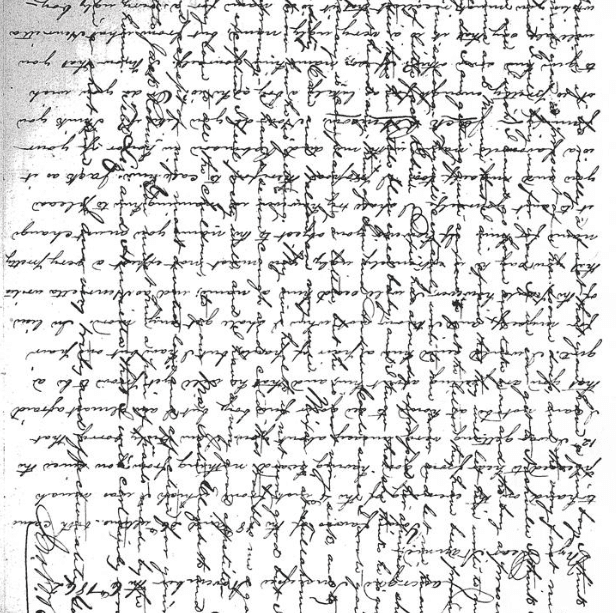Introduction: In this article – part of an ongoing “Introduction to Genealogy” series – Gena Philibert-Ortega explains the importance of transcribing genealogy records and provides tips for how to do it. Gena is a genealogist and author of the book “From the Family Kitchen.”
Do you transcribe the genealogy records you find? Have you ever considered the importance of transcribing? Not exactly sure why you would transcribe, or what it means to transcribe?
What Does It Mean to Transcribe?
First, let’s clarify a few terms – namely, transcribing and abstracting. Though related, these are two different activities. To transcribe is to create an exact copy of a document. “To copy a document literally, word for word – with all spelling, grammar, and punctuation copied exactly as found.”* When you abstract you are creating a synopsis, removing everything but the most genealogically relevant information.
So, why would you choose to transcribe something – especially if you have the original document or a copy? It wasn’t too long ago that researchers transcribed because we needed a copy of a document, but today with digital cameras, scanners, and cell phones there is less of a need to use transcribing as a photo-duplication tool.

There are a few other reasons transcribing can be useful for the family historian. In the case of a handwritten document, transcribing provides a copy that can be more easily read. Today, there is much discussion on the loss of cursive writing education, but even seasoned researchers can find reading a document from an earlier generation, even as recent as the American Civil War, to be difficult at best. In the case of some Civil War-era letters I am studying, not only do I have to contend with the handwriting – but I also have to deal with “overwriting” done to make the most of the available paper they had. Transcribing allows you to easily read a document in order to refer to it.
Transcribing also allows you to preserve the item. Once it’s transcribed you can store the original, preserving it for the long-term care of original, rare, or fragile documents.
Transcribing produces an easy-to-read document for other researchers or your family. Sharing your family history research is much more appreciated when those receiving it can actually read what you provide. While we as researchers are familiar with historical documents and the information they contain, non-family historians are not. So, they likely will be more interested when they can quickly understand what you are providing them.
Lastly, transcribing allows you to analyze the document. Too often we skim documents or just zero in on a line item or two that answers our research question. Transcribing forces you to focus on the details of the document. It turns your attention to all of the information provided. When you focus on all of the content, you may come away with valuable information that you hadn’t noticed before.
How Do You Transcribe?
Now that you know the importance of transcription, how do you transcribe? Think of transcribing as creating an exact duplicate copy.
What that means is that if the document contains information in two columns, your transcription should have two columns. If there are six words to a line, you should type the same six words to a line. Misspelled words are also misspelled in your transcription. Why would you do this? The transcription should give your reader (which may not be you) an idea of what the original looked like and the context of the original. This will help in understanding the document.
Inevitably, you may not be able to read some of the words in the original document. What do you do when this happens? Use square brackets to indicate anything that you are interjecting into the transcription. So, if you can’t read a word you could write [word illegible] or le[??], substituting a question mark for each letter you can’t decipher. However, don’t just add a bunch of question marks for things you don’t understand. Random question marks leave the reader guessing what you are referring to or even if it’s part of the original.
Square brackets, unlike parenthesis, are rarely found in original documents, so they allow the reader to understand that what’s in those brackets is what you have added (that includes comments and corrections) and is not part of the original document.
Problems Transcribing, or What Does That Say???
Ok, so everything I said above is all fine and good – but transcribing can be difficult. Transcribing a typewritten document is easy. And yes, you could transcribe even a typewritten document to help you analyze, preserve, and focus on the content. But how do you make handwritten documents easier to understand?
Everyone has their own tricks. Here are a few to consider:
- I scan documents and then enlarge them so that I just see a few words at a time. That forces me to concentrate on each letter as I attempt to decipher the word.
- If you’re having problems with a letter, search the document for other similar letters to better understand what the letter or word could be. This can also help you decide what it can’t be.
- Try physically writing the word exactly like the original and see if that helps.
- Crowdsource the problem. Ask friends on social media what they believe the word is. Make sure to provide some context, like place, year, and type of document. This will help them better understand what it could be.
- Seek out other documents written by the same person if possible. That can help in deciphering that person’s writing.
- Look into tutorials on Paleography, especially those that go over a specific style of writing, say 18th century writing.
- If you are transcribing an unfamiliar document, search out other examples or even articles about that type of document. Learning more about it can help in deciphering some of the language.
- Make sure that your software’s spell check feature is turned off. You don’t want to accidentally correct words that shouldn’t be corrected. Also consider turning off your grammar check.
- Always proofread what you transcribe. Make sure that it “makes sense.” Sometimes when transcribing and “guessing” what a word or letters are we may write something that makes absolutely no sense and is incorrect.
You can find more resources for deciphering handwriting in this previous GenealogyBank Blog article: Genealogy 101: I Can’t Read That! Deciphering Old Handwriting. As you become more familiar with certain types of documents and the language they use, transcribing will become easier.
Lastly, make sure to label your transcription with a source citation so that you’ll have information about the original document. Also include the date you transcribed it, your name and contact information.
Give It a Try!
Transcribing can seem like extra work, but it is an important tool as we analyze and better understand our ancestors’ records.
___________________
* “Transcripts and Abstracts” by Mary McCampbell Bell, CLS, CGL in Professional Genealogy: A Manual for Researchers, Writers, Editors, Lecturers, and Librarians. Edited by Elizabeth Shown Mills. Page 293.
